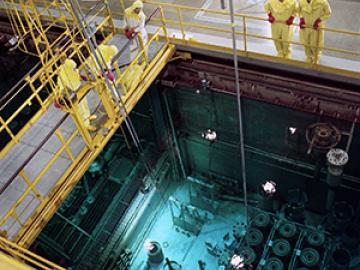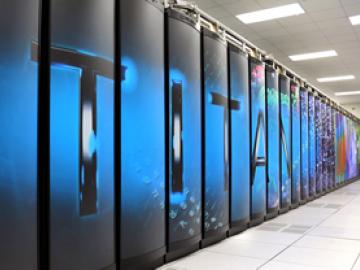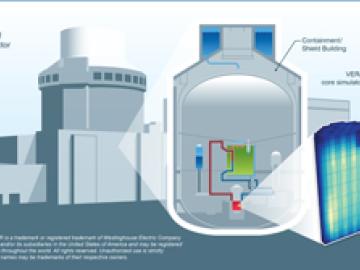Filter News
Area of Research
- (-) Nuclear Science and Technology (7)
- Advanced Manufacturing (3)
- Biological Systems (4)
- Biology and Environment (13)
- Biology and Soft Matter (1)
- Building Technologies (1)
- Chemistry and Physics at Interfaces (1)
- Clean Energy (42)
- Computational Biology (1)
- Computational Engineering (1)
- Computer Science (1)
- Energy Frontier Research Centers (2)
- Fossil Energy (1)
- Functional Materials for Energy (3)
- Fusion and Fission (3)
- Geographic Information Science and Technology (1)
- Isotopes (3)
- Materials (69)
- Materials Characterization (2)
- Materials for Computing (1)
- Materials Synthesis from Atoms to Systems (3)
- Materials Under Extremes (2)
- National Security (8)
- Neutron Science (18)
- Nuclear Systems Technology (1)
- Supercomputing (29)
- Transportation Systems (1)
Media Contacts

The recently discovered element 117 has been officially named "tennessine" in recognition of Tennessee’s contributions to its discovery, including the efforts of the Department of Energy's Oak Ridge National Laboratory and its Tennessee collaborators at Vanderbilt University and the University of Tennessee.

Two researchers from the Department of Energy’s Oak Ridge National Laboratory have been elected fellows of the American Nuclear Society. Alan S. Icenhour and Jess C. Gehin were recognized for their outstanding scientific and technical leadership in nuclear energy rese...

Researchers at the Department of Energy’s Oak Ridge National Laboratory will support two new DOE-funded projects to explore, develop and demonstrate advanced nuclear reactor technologies. The projects announced Jan. 15 will allow industry-led teams with participan...

The High Flux Isotope Reactor, or HFIR, now in its 48th year of providing neutrons for research and isotope production at the Department of Energy’s Oak Ridge National Laboratory, has been designated a Nuclear Historic Landmark by the American Nuclear Society (ANS).

A team representing Westinghouse Electric Company and the Consortium for Advanced Simulation of Light Water Reactors (CASL), a Department of Energy (DOE) Innovation Hub led by Oak Ridge National Laboratory (ORNL), has received an International Data Corporation HPC Innovation Excellence Award for applied simulation on Titan, the nation’s most powerful supercomputer, which is managed by the Oak Ridge Leadership Computing Facility at ORNL. s

Oak Ridge National Laboratory researcher John Wagner has been named a 2013 recipient of the Department of Energy’s Ernest Orlando Lawrence Award for his work in advancing computer, information and knowledge sciences.

Scientists and engineers developing more accurate approaches to analyzing nuclear power reactors have successfully tested a new suite of computer codes that closely model “neutronics” — the behavior of neutrons in a reactor core.




